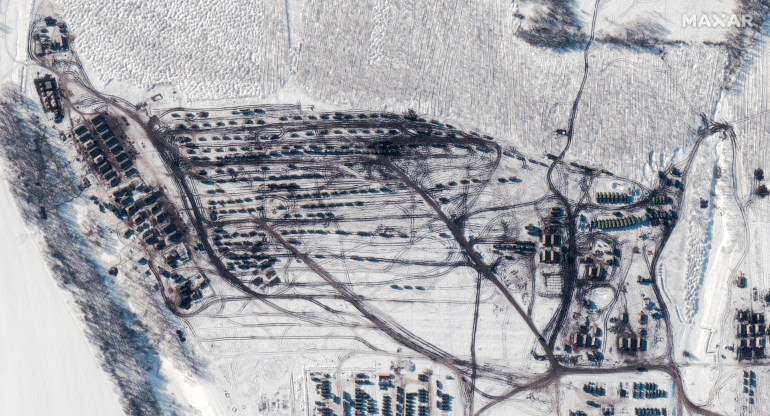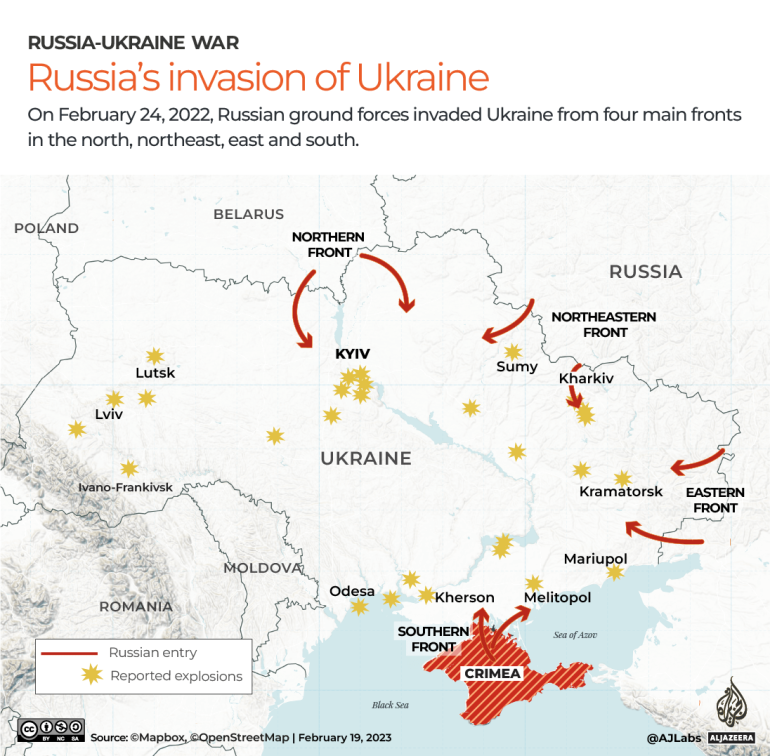The breakaway eastern Ukrainian regions had been at the heart of a conflict between Ukraine’s forces and Russia-backed separatists since 2014, when Moscow annexed Crimea.
Putin’s recognition of the so-called Donetsk People’s Republic (DPR) and Luhansk People’s Republic (LPR) was a watershed moment in the months-long escalation preceding Russia’s invasion of Ukraine.

Russian forces invade Ukraine
Shortly before 6am Moscow time (03:00 GMT), in a televised address, President Putin announced that his country was launching a “special military operation” in eastern Ukraine to protect the people of DPR and LPR.
“I decided to conduct a special military operation. Its goal is the protection of people who, during eight years, suffer abuse and genocide from Kyiv regime. To this end, we will seek to demilitarise and denazify Ukraine, as well as bring to trial those who perpetrated numerous bloody crimes against civilians, including against citizens of the Russian Federation, ” he said.
Europe would then wake up to what would be the largest, most protracted military offensive in the continent since World War II.
Russian ground forces invaded from four main fronts in the north, northeast, east and south, while artillery and missiles targeted numerous locations.

From the north – Russian forces moved towards Kyiv from Belarus.
From the northeast – Russian forces moved west towards Kyiv from Russia.
From the east – Russian forces pushed towards Kharkiv from the Donbas region.
From the south – Russian forces moved from Crimea towards Odesa in the west, Zaporizhzhia in the north and Mariupol in the east.
In the past year, Russia has captured key cities and strategic ports, and Ukraine has launched multiple counteroffensives to regain lost territory.
In the following infographic series, Al Jazeera maps these major battles across the country.

